
Peru’s Sacred Valley or Willka Qhichwa in Quecha
PataLaras and Lamay
Lima Rides || Sacred Valley Rides || Salkantay || Machu Piccu || Sky Lodge
After a one hour flight via LATAM Airlines from Lima we arrived in Cusco, the historic capital of the Inka Civilization. From here we drove an hour to the town of Urubamba in the heart of the Sacred Valley. While in Urubamba we stayed at the well appointed Villa Urubamba. The Sacred Valley was sculpted by the Urubamba river. It is 100km long with Pisac to the East and Machu Picchu to the West.
Rio Urubamba lies at 2000-3000m with peaks rising to just under 6000m – a massive vertical drop to say the least. The slopes between 3000m and 4000m+ are used to cultivate maize, potatoes, coca, peppers, farm trout and whatever else could be grown. Above 5000m you find snowfields and glaciers – massive glaciation. These glaciers provide snowmel which provide irrigation via Inka-built canals.
The Inka’s controlled this area from 1000 – 1500CE. It was during this time that many trails and waterways. Their stamp is everywhere; the Sacred Valley is truly a living museum where archaeological artifacts are in abundance and incorporated into everyday life. Even before Machu Picchu was made into a UNESCO Site in 1983, and labeled one of the new 7 Wonders of the World in 2007 the Sacred Valley was well-known. While Machu Picchu is the most well known Inka ruin, this area is scattered with ruins, so many that some aren’t even marked; remaining buried under the forests and undergrowth.

The ruins of Pumamarka with cows and llamas wandering through its terraces. A fish farm is irrigated by canals; people use the stairs to commute to the upper fields

Chicon and Pitusiray loom above Urubamba and the Sacred Valley

A trout farm in the village of Huilloc provides income to villagers who sell the fish downstream to restaurants and who consume trout. The trout also are great in trucha ceviche! Curiously the women are much more into wearing traditional dress for everyday activities then the men who revert to t-shirt, hoodies and jeans. Maybe men are slobs everywhere in the world?
The riding
About the riding!
What we found was that Mountain Biking is a great way to see many ruins off the beaten track. Since we pretty much rode Inka trails which are still used by the Quecha and other locals we rode by many Inka ruins, farms and communities. The trails are technical so a burly bike will be the best option for riding here. Our shuttle laps were about one to two hours, we did two or three runs, you could do more if you don’t take as many photos as we did. Box lunches and water were also provided each day. Breakfast was complimentary at the Hotels. We were on our own for dinner to explore the culinary delights of Urubamba (no sarcasm – Peruvians really enjoy cooking and their passion for food is evident).
Daytime temperatures of the Sacred Valley are consistent all year at around 15oC to 20oC, making it conducive for agriculture and mountain biking! High elevation temps can drop dramatically as can nightime temps so dress accordingly! What changes is precipitation. We were here in November which is the start of the rainy season. It rained during the nights, but we never rode in the rain. Since the area is generally dry this made the trails quite tacky .
There are many potential trails to ride in the Sacred Valley. These trails are shared by the communities who use these areas for their livestock and fields. By going with Holy Trails MTB we were assured we were on trails that would cause mimimal issues with the local communities and ensured that the trails were suitable for mountain bikes. We rode in 6 areas in the Sacred Valley; Laras, Lamay, Moray/Maras, Huchuy Qosqo, Racchi Trails and Urquillos. The Racchi and Urquillos rides are ones developed by Holy Trails MTB that we agreed not to publicize due to a desire to respect the local communities (ride with Holy Trails MTB to avoid local issues). The other two areas of riding were Salkantay, an epic two day trip with a 3400m descent from 4650m at the pass to Santa Teresa and the Cocalmayo Hotsprings, plus a day of riding waiting out the Salkantay rain in Curahuasi/Abancay.

The alarmingly massive and glaciated N faces of Sahuasiray and Sirijuani dwarf Hans on the PataLares ride

The Inka- built canals along the ride from Lares descending to the village of Parcco. The undergrowth obscures the sheer 20m drop just to Alberto’s right
 y
y
On one of our laps of Lamay Hans descends Inka-built stairs

Peruvian Scarecrow in the Lamay valley
PataLares
PataLares is the name given by Hans to the rides encompassing the high pamero/puna in the Patacancha highlands then descending valleys via the N side of Pumawank’a from the Chalhua Cocha pass. Via this route we got amazing views of Sahuaisiray and Sirijuani then took parts of the Wakawasi trail to the village of Lares ducking out on partway on the road as a member of the party was feeling altitude sickness.
The Patacancha trail starts at 4100m at the pass and has some pedally and climbing bits. It is not a particularly good way to acclimatize because exit to lower altitudes will take a bit of time so be forewarned.

Sharon and Hans starting out on the trail winding its way through the pamero
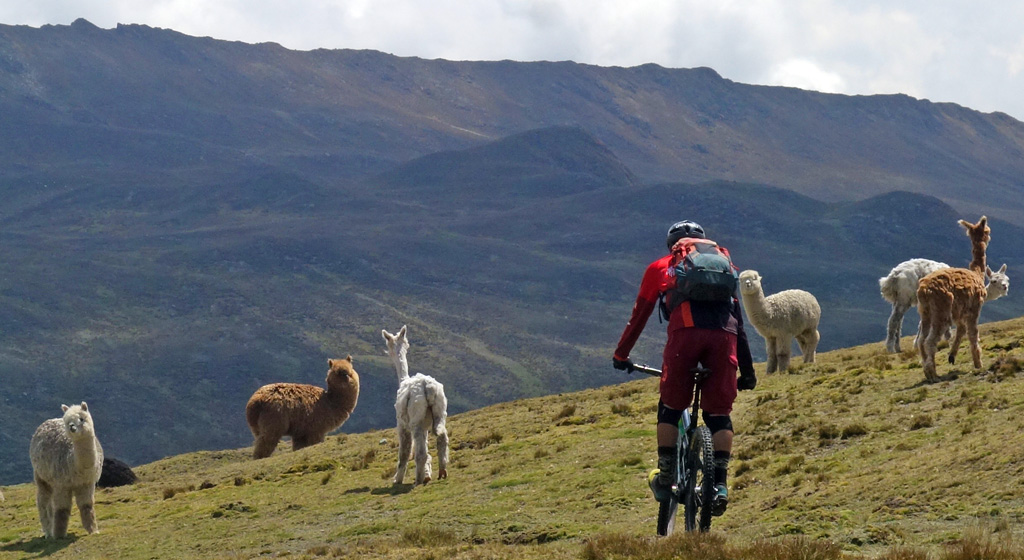
Llamas on the Patacancha highlands

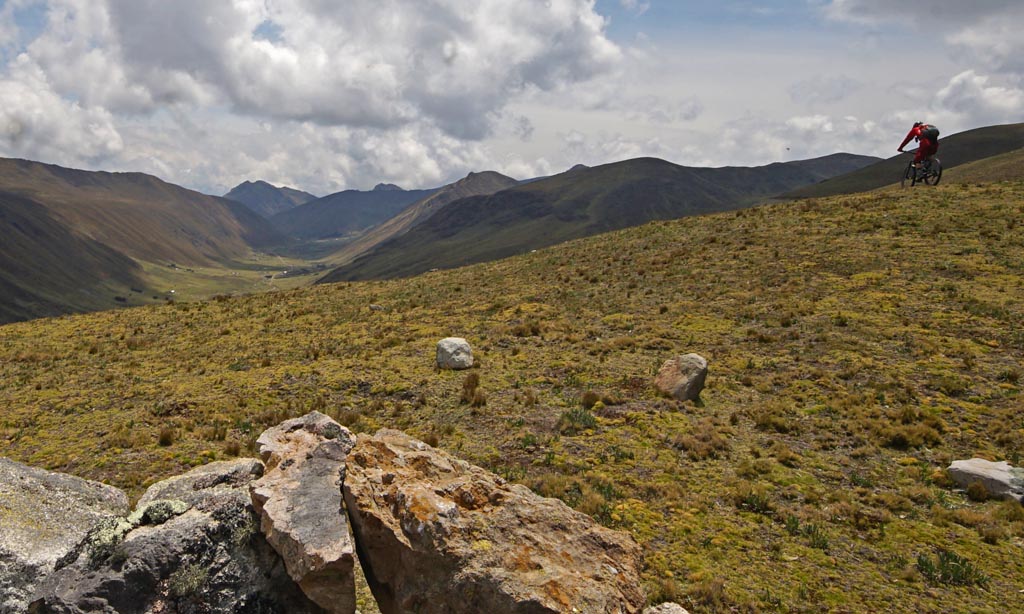

The trail gets vague and Hans meadowskips

Hans on the Sirijuani ridgeline taking in the views


Alberto dropping downvalley to Wakawasi with more glacier views

Sharon on the ridgeline dropping. The trail parallels the road in the valley and descends to Wakawasi

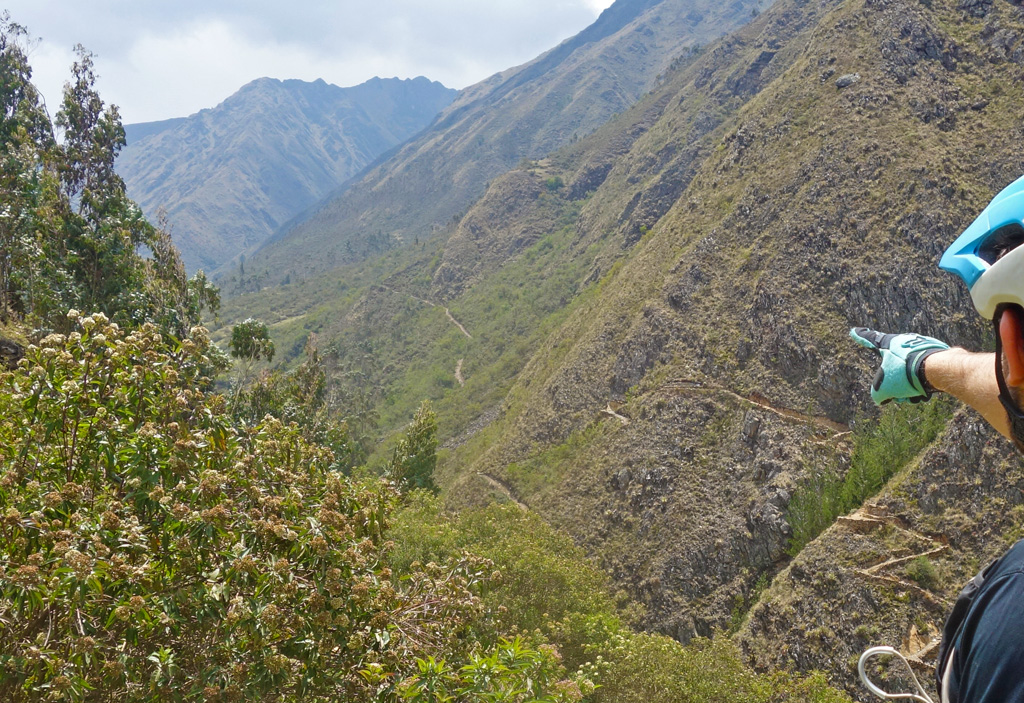
The trail from Wakawasi as we drop elevation on the descent all the way down-valley to Lares
Lares descent then Lamay laps
The descent from Lares is a good way to acclimatize. The insane paved road from Lares past Pampascorral and Morras with its Sahuaisiray glacierview at 3850m is a feast for the eyes in itself. You can marvel at how the glacier has carved up the mountain and the valley. The final pass at Abra Lares is flanked by Chhullunkunayuq and an un-named peak and is almost always cold and windy so again, be forewarned.
If you’re there on a clear day you’ll be reminded that in the Southern Hemisphere it’s the N faces that are solar aspects and the S aspects that are in the shade. The N face of the mountains are impressive but the S faces are even more mind-blowing with overhanging seracs and glaciation in your face..
We descended via Lares to Tortora finishing at Machacancha. The descent itself is from 4460m at Abra Lares to 3100m via Parcco and then the town of Calca at the bottom of the Sacred Valley. After the Lares descent we rode two sections in the valley of Lamay just a short distance E of Calca. The first lap was a 715m descent in 7km starting from the village of Bisminay at 4200m and ending at the Saparccto trailhead at 3500m. The second lap was a 1000m descent in 9km from 4000m and ending at Lamay at 3000m (watch out villagers at Huama who have gated the road and may want bribes to lift the gate). We found out real quick that these huge descents are commonplace for Peruvians.

Our digs while in Urubamba – Villa Urubamba, Complimentary breakfast of course.

Daily Box lunch – Sandwich, chocolate, fruit, smoothies, energy snacks and beer for apres!


Riding by the Llamas. My Pivot Firebird was perfect for Peru riding.

Laras trail crosses the road in the top section

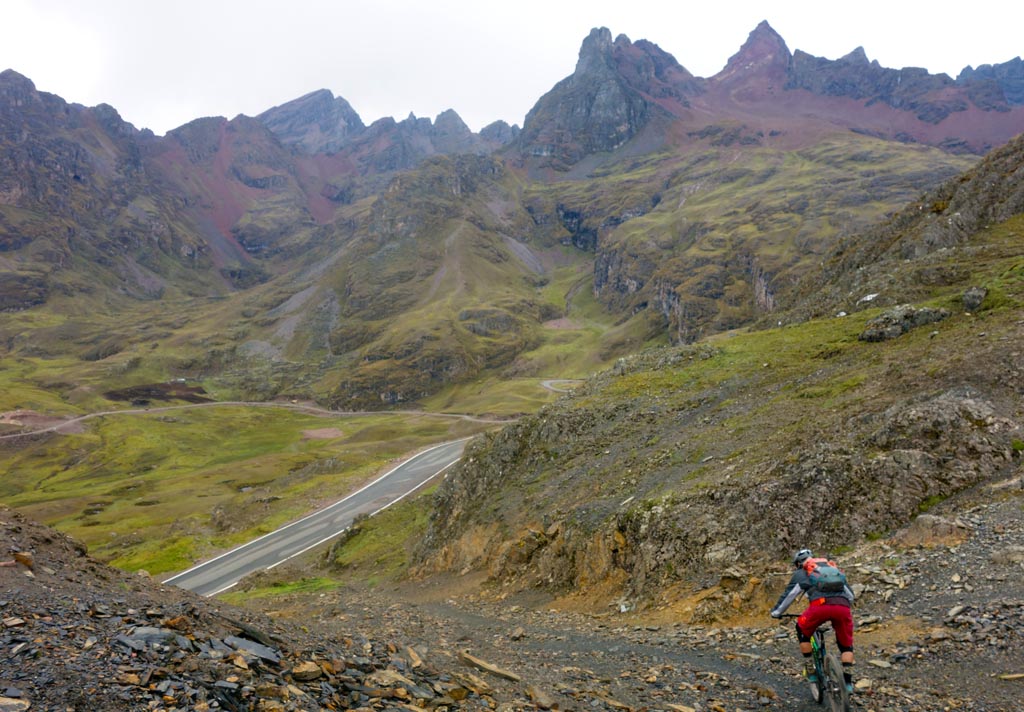







The lower section parallels the Rio Jochoc

Alberto riding some cool stairs

Alberto riding by an ancient and still used Inka canal

Another shuttle back up to ride Lamay trails


Inka Tech

Cool to see the old terraces on adjacent hillsides

More fields with cool geology around. There were small farms along this trail with no road access, they might have power now…

More terraced slopes and small homesteads, in the foreground a small shelter to when the people watch their Llamas

Inka Stairs!

Inka Stairs!

Inka Stairs!
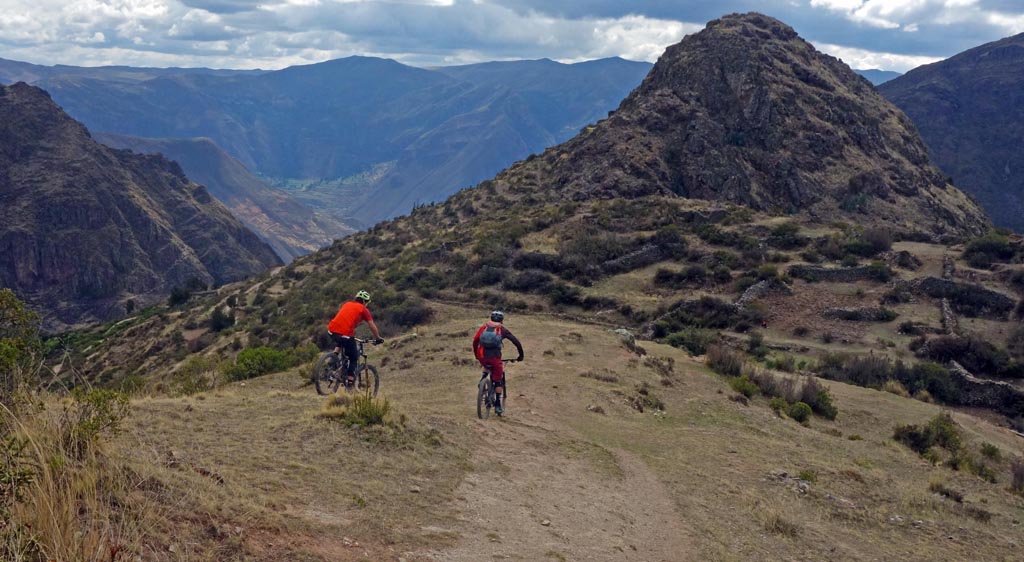
Second run to Lamay

Town of Calca

Town of Calca

Villa Urubamba is a great place to stay, lots of room for your bikes and stuff, a large Yurt to stretch, beautiful gardens to relax, and of course it comes with breakfast like most hotels in Peru. .
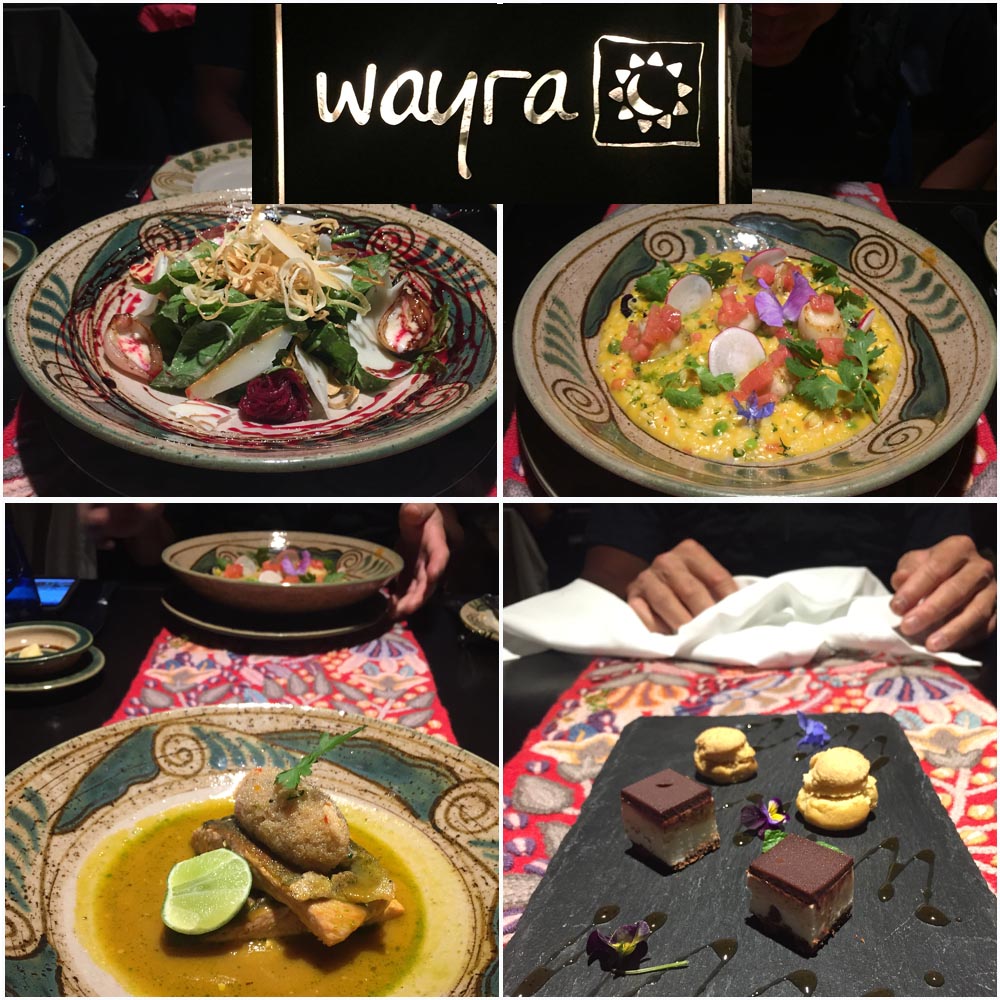
Wayra Restaurant a short walk from Villa Urubamba, would be very expensive in Whistler, since it’s in Peru its reasonable with 5star service.
